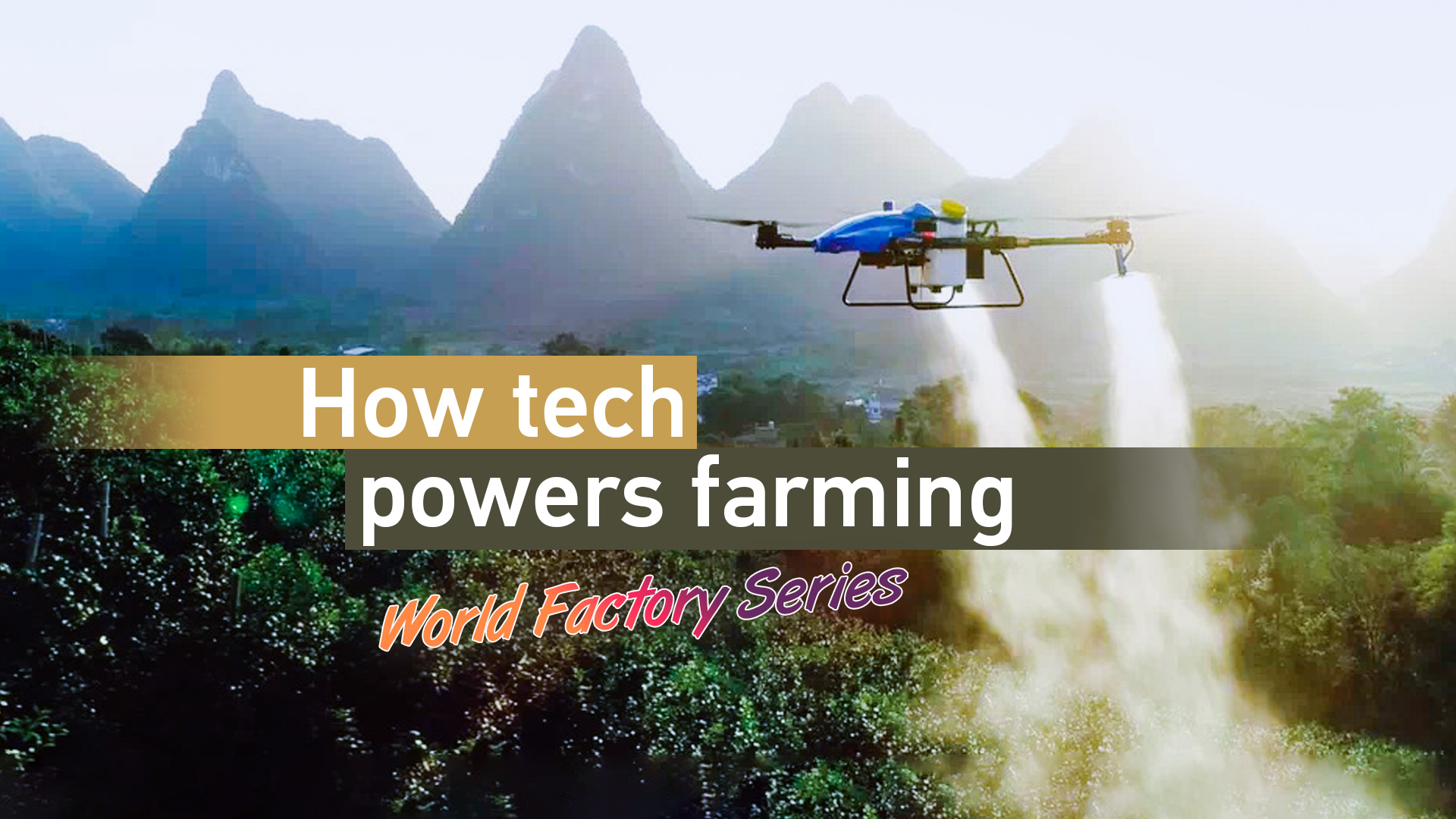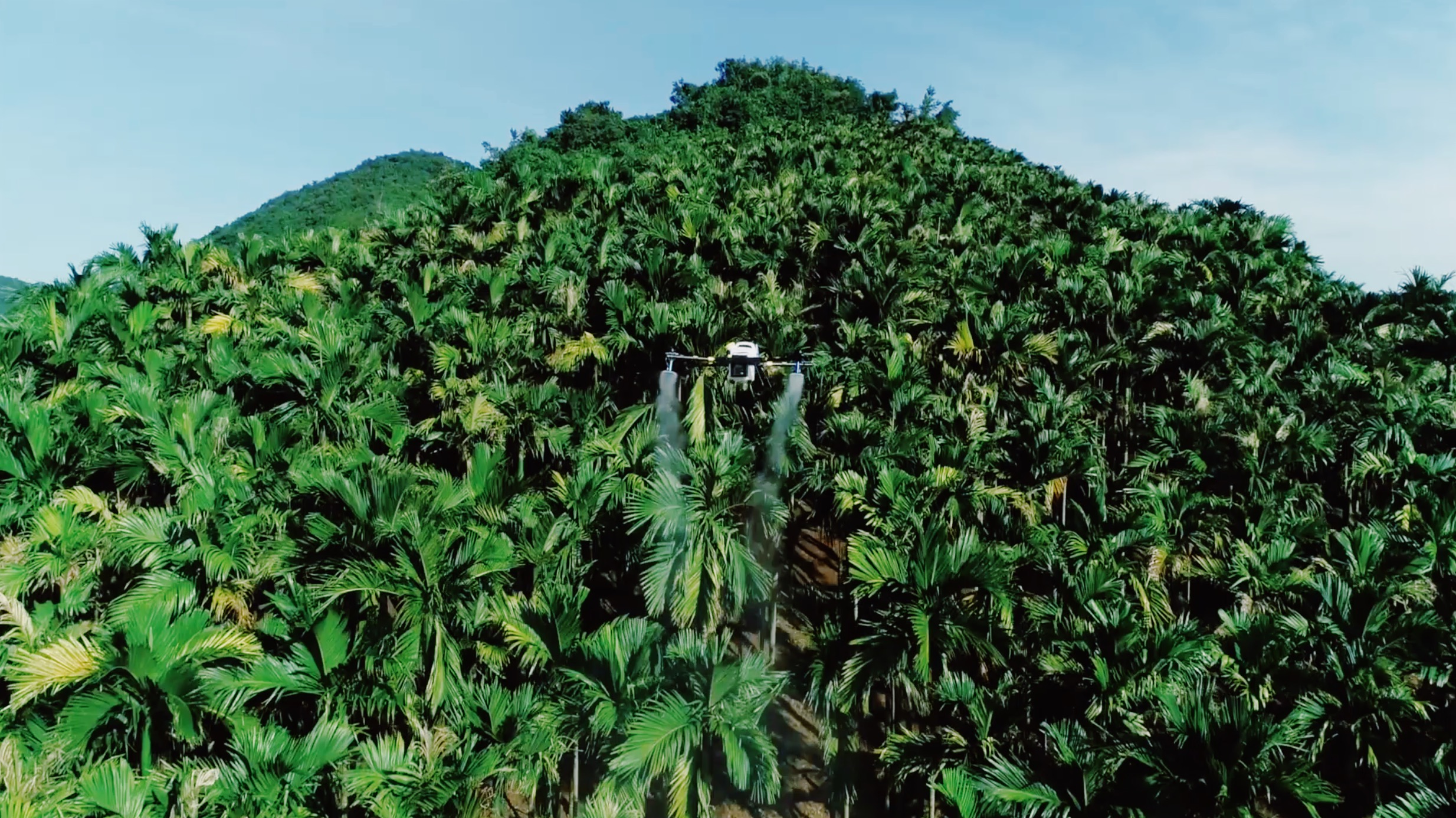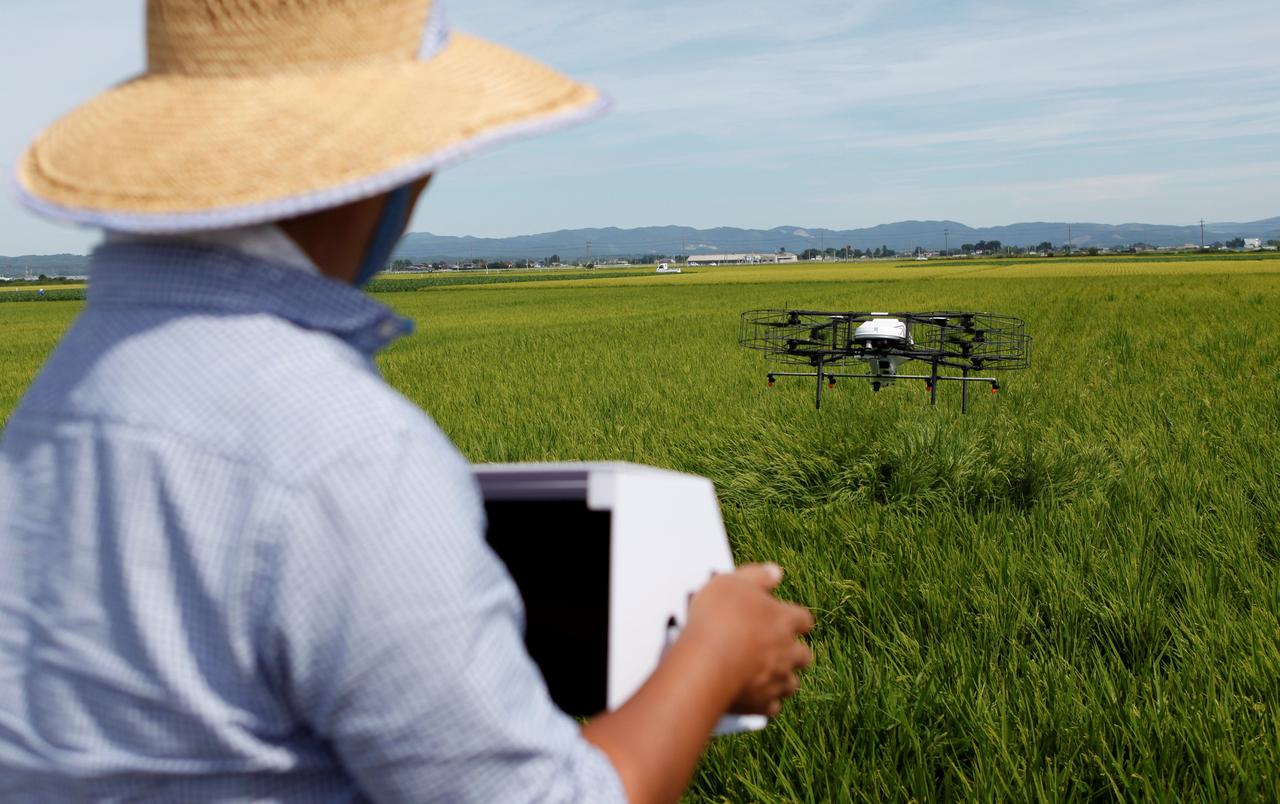02:55

Editor's note: This is the first article of our continuing World Factory series, which delves into the trajectory of China's economic growth amid a changing geopolitical landscape, the pandemic, and a global economic recession.
Every year, roughly 200,000 people die from pesticide poisoning across the world, with a large number of them falling prey to direct spraying. The United Nations released the report in 2017, bringing public attention to this long ignored issue. Toxic exposure to pesticides could cause health problems ranging from cancer, sterility, birth defects to neurological disorders. "In some countries, pesticide poisoning even exceeds fatalities from infectious diseases," the report noted.
Pesticide poisoning has, for millennia, been a conundrum for farmers worldwide, yet no effective solution has come out until recent years when scientists and technologists began applying automated robots to agriculture.
"I wanted to do something for people's well-being with my expertise," Zhao Shuyan told CGTN outside her office building in east China's Suzhou Industrial Park.
A former autopilot director at German auto supplier Bosch, she turned to agriculture earlier this year. "For many years, I'd been working to do good to the industrial community. Now I want to take a crack at the agricultural sector to help those engaged in the oldest yet most important profession."
She's mainly responsible for developing the "eyes" of the crop-dusting drones of EAVision – a tech startup founded in Silicon Valley five years ago. The firm launched in 2016 the first commercialized autonomous drone, or unmanned aerial vehicle (UAV), in the farming industry.

A drone flying above a hill. /courtesy of EAVision
A drone flying above a hill. /courtesy of EAVision
China has 134.86 million hectares of arable land, according to the country's Ministry of Natural Resources, 66 percent of which are scattered across hilly and mountainous regions as well as plateaus.
When her team headed to betel nut plantations in Hainan, which account for around 95 percent of the crop in the country, they found farmers there had to hold a 10-meter pole to spray pesticides onto the nuts hanging up high. "The chemicals would flow down, exposing farmers to toxic effects. Plus, the pesticides weren't that effective."
The spicy, date-like fruit has long been a cultural symbol of Hainan. People from many parts of southern China and Southeast Asia usually chew the nut as a breath freshener. This tropical fruit provides a major source of income for generations of farmers in this southernmost province of China, and now 2.3 million farmers are growing this crop despite hazards to their health. The introduction of the crop-dusting drones has reassured betel nut growers there.
The steeper the slope is, the more dangerous for farmers to spray pesticides on their crops. "They are basically living at the mercy of nature," said Zhao. In east China's Zhejiang, where hills occupy 70 percent of its land surface, the drone increases the efficiency of pecan farmers by a factor of 20 and reduces intensive labor by 90 percent, according to Zhao. On the slopes that can reach 70 degrees, the crop yield has also been multiplied.
"For instance, last year pecan farmers there claimed 1,000 mu (66.6 hectares) of land to work on, but this year they can claim 3,000 mu," Zhao added. The technology frees farmers from intensive labor to focus on adding greater value. The experience that they gain from growing pecans can hence be used further down the supply chain, from processing to selling the nuts.

A farmer operates a drone to spray pesticides while diagnosing the growth of individual rice stalks in Japan, August 20, 2018. /Reuters
A farmer operates a drone to spray pesticides while diagnosing the growth of individual rice stalks in Japan, August 20, 2018. /Reuters
The autonomous drone has grown in popularity in overseas markets over the past few years because it has made farm work safer and easier. Using drones instead of humans to spray chemicals has mitigated farmers' chronic exposure to toxins in both poor agrarian countries and the developed world.
The products have been exported to a slew of countries not merely in adjacent Southeast Asian countries like Thailand, India and Japan but also across the pond to Brazil – the world's second largest maize exporter, and the U.S. where fruit and tree nuts are many farmers' cash crops.
The pandemic has further fueled the demand for drones. Previously, the U.S. lacked manpower to toil on the farmland, so they imported laborers from Mexico to deal with the shortage. "This year, COVID-19 and tight immigration policies have further exacerbated the labor shortage," Zhao said. In hilly California, home to 11,462 grape farms, the order for the autonomous drones has surged this spring.
It's also noted that during March and April in China, drones were also used for crop sterilization so that work in most farmlands has all caught up.

Assembling a drone at EAVision's workshop in Suzhou, east China's Jiangsu Province, August 26, 2020. /CGTN
Assembling a drone at EAVision's workshop in Suzhou, east China's Jiangsu Province, August 26, 2020. /CGTN
While the tech company is working day and night to increase the output, tech-savvy engineers and scientists from seven countries are working together to perfect this small, plain-looking drone, as they collaborate on R&D in the fields of vision, automatic control, artificial intelligence as well as plant protection. In addition to autonomous driving, Zhao's team has solved several perennial, tough problems in the outdoor application of binocular vision, such as ghost, glaring, and real-time calibration.
"When the drone is lost, it can find its way with its vision and sensors and land safely and precisely where it took off," Zhou Hailiang, a pre-sales engineer with EAVision, told CGTN.
Their efforts are helmed by this Chinese tech firm. "Now that agriculture is facing an enormous boost worldwide, dedication to smart farming machinery might be a chance for China to take a lead."
Video director: Wang Zengzheng
Article written by Wang Xiaonan
Videographer: Zheng Lei
Cover image designer: Qu Bo
Supervisor: Zhang Shilei